University of Nottingham
Type of resources
Topics
Keywords
Contact for the resource
Provided by
Years
Formats
Representation types
Update frequencies
Resolution
-
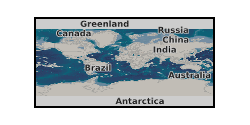
The solubility of water (H2O) in carbon dioxide (CO2) and nitrogen (N2) mixtures (xN2 = 0.050 and 0.100, mole fraction) has been investigated at 25 and 40 degrees C in the pressure range between 8 and 18 MPa. The motivation for this work is to aid the understanding of water solubility in complex CO2-based mixtures, which is required for the safety of anthropogenic CO2 transport via pipeline for carbon capture and storage (CCS) technology. The measurements have been performed using an FTIR spectroscopic approach and demonstrate that this method is a suitable technique to determine the concentration of water in both pure CO2 and CO2 + N2 mixtures. The presence of N2 lowers the mole concentration of water in CO2 by up to 42% for a given pressure in the studied conditions and this represents important data for the development of pipelines for CCS. This work also provides preliminary indications that the key parameters for the solubility of H2O in such CO2 + N2 mixtures are the temperature and the overall density of the fluid mixture and not solely the given pressure of the CCS mixture. This could have implications for understanding the parameters required to be monitored during the safer transportation of CO2 mixtures in CCS pipelines. The paper is available at http://www.sciencedirect.com/science/article/pii/S1750583615000444, DOI: 10.1016/j.ijggc.2015.02.002. UKCCSRC Grants UKCCSRC-C1-21 and UKCCSRC-C2-185.
-
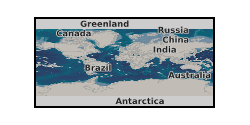
This poster on the UKCCSRC Call 2 project Measurement of Water Solubility Limits of CO2 Mixtures to Underpin the Safe Pipeline Transportation of CO2 was presented at the CSLF Call project poster reception, London, 27.06.16. Grant number: UKCCSRC-C2-185. Monitoring the composition of mixtures which are of relevance to Carbon Capture and Storage pipelines is of high importance for the safe transportation of CO2 during the CCS process. Captured CO2 will contain varying amounts of impurities such as N2, H2, O2 and H2O. These are components which greatly affect the phase behaviour of the captured CO2. Being able to quantifiably monitor the composition and components of CCS-relevant mixtures is key for (i) safety; (ii) determining standard operating conditions. This project, incorporating several novel techniques, have been used to measure: • The phase behaviour and thermodynamic properties of CO2 containing varying amounts of impurities in order to improve or validate existing models of CCS relevant gas mixtures. • The solubility of water in impure CO2 CCS mixtures.
-
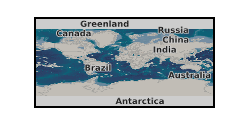
The solubility of water (H2O) in carbon dioxide (CO2) and nitrogen (N2) mixtures (xN2 = 0.050 and 0.100, mole fraction) has been investigated at 25 and 40 °C in the pressure range between 8 and 18 MPa. The motivation for this work is to aid the understanding of water solubility in complex CO2-based mixtures, which is required for the safety of anthropogenic CO2 transport via pipeline for carbon capture and storage (CCS) technology. The measurements have been performed using an FTIR spectroscopic approach and demonstrate that this method is a suitable technique to determine the concentration of water in both pure CO2 and CO2 + N2 mixtures. The presence of N2 lowers the mole concentration of water in CO2 by up to 42% for a given pressure in the studied conditions and this represents important data for the development of pipelines for CCS. This work also provides preliminary indications that the key parameters for the solubility of H2O in such CO2 + N2 mixtures are the temperature and the overall density of the fluid mixture and not solely the given pressure of the CCS mixture. This could have implications for understanding the parameters required to be monitored during the safer transportation of CO2 mixtures in CCS pipelines. The paper is available at http://www.sciencedirect.com/science/article/pii/S1750583615000444, DOI: 10.1016/j.ijggc.2015.02.002. UKCCSRC Grants UKCCSRC-C1-21 and UKCCSRC-C2-185.
-
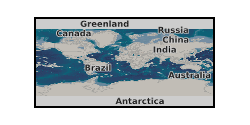
This poster on the UKCCSRC Call 2 project, Measurement of water solubility limits of CO2 mixtures to underpin the safe pipeline transportation of CO2, was presented at the Cardiff Biannual, 10.09.14. Grant number: UKCCSRC-C2-185.
-
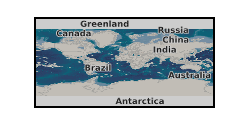
This poster on the UKCCSRC Call 2 project, Measurement of water solubility limits of CO2 mixtures to underpin the safe pipeline transportation of CO2, was presented at the Cranfield Biannual, 21.04.15. Grant number: UKCCSRC-C2-185.
-
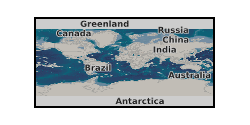
This project will determine the dew point of water, or "water solubility", in impure CO2 mixtures (e.g. containing N2 and H2). At present, key data for defining water levels have not been determined. The data are important because liquid water is highly acidic in the presence of excess CO2; this acidity can be increased by trace amounts of SO2 and H2S and acidity will greatly accelerate corrosion. This research will provide the first accurate data for CO2 transportation systems, which can be used to develop accurate equations of state and define more robust pipeline specifications. These in turn can be applied to inform cost benefit analyses on the additional costs on the pipeline material and construction balanced against the cost of purification and the needs of safety. The research will provide critical physical property data to enable the safe and cost effective transportation of CO2. Grant number: UKCCSRC-C1-21.
-
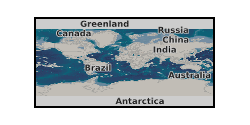
This presentation on the UKCCSRC Call 1 project, Determination of water Solubility in CO2 Mixtures, was presented at the Cranfield Biannual, 22.04.15. Grant number: UKCCSRC-C1-21.
-
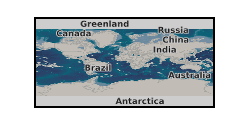
A new synthetic method for studying phase behaviour is described using Attenuated Total Reflection (ATR) spectroscopy. The method has been developed to provide relevant information on the solubility of water in CO2. The dew point of water has been determined at three different pressures, viz. (4.05, 5.05 and 6.03) MPa with mole fractions of water between 0.01 and 0.04. The data obtained fill the gap in the literature in these regions of pressures and temperatures and could be of high importance in the context of Carbon Capture and Storage (CCS) technology. Indeed, the presence of water in the captured CO2 could damage the pipeline used for CO2 transport. Hence, it is very important to have a fully understanding of the behaviour of the (CO2 + H2O) mixtures in wide range of temperature relevant for CCS. The paper is available at http://www.sciencedirect.com/science/article/pii/S0021961415003547, DOI: 10.1016/j.jct.2015.09.024. UKCCSRC Grant UKCCSRC-C2-185.
-
Fluid pH and major and minor element data from shale-acidic fluid interaction laboratory experiments
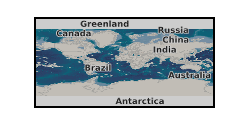
This dataset presents major (ICP-OES) and minor (ICP-MS) element data and fluid pH during interaction of simulated fracturing fluids with the Bowland-Hodder shale at a variety of conditions, i.e. fluid acidity (pH 1-5), temperature (25-70 C), and rock/fluid ratio (from 0.2:200 to 20:200), as well as two end member mineralogical compositions (from 618 m depth and 673 m depth). The data was collected under the SECURe (Subsurface Evaluation of CCS and Unconventional Risks funded under the European Union’s Horizon 2020 research and innovation programme under grant agreement number 764531. Data supplied by permission of University of Nottingham and British Geological Survey.
-
The data comprise measurements of the 'soluble', 'adsorbed' and 'organically bound' 99Tc concentrations in a diverse set of soils following experimental addition of 99TcO4- and incubation in the laboratory under controlled temperature conditions for 897 days. The long term behaviour of 99Tc in aerobic soils was studied by conducting a laboratory-based experiment in which a set of 20 topsoils from central England with contrasting properties (e.g. pH, organic matter content, land use) were contaminated with 99TcO4- and incubated in the dark, in a moist but aerobic condition, at a temperature of 10 deg C for 2.5 yr. The physico-chemical transformations of 99Tc in each soil microcosm were periodically monitored by means of a three-step sequential extraction procedure conducted on subsamples of incubated soil. The resulting dataset enabled quantification of the kinetics of 99Tc transformation in aerobic soils as a function of soil properties and land uses (arable, grassland and moorland/woodland). The data will be useful in developing models of long-term 99Tc bioavailability in aerobic soils under temperate conditions. Full details about this dataset can be found at https://doi.org/10.5285/4622f906-e28a-4210-aa03-d2e4169b1be8
 NERC Data Catalogue Service
NERC Data Catalogue Service